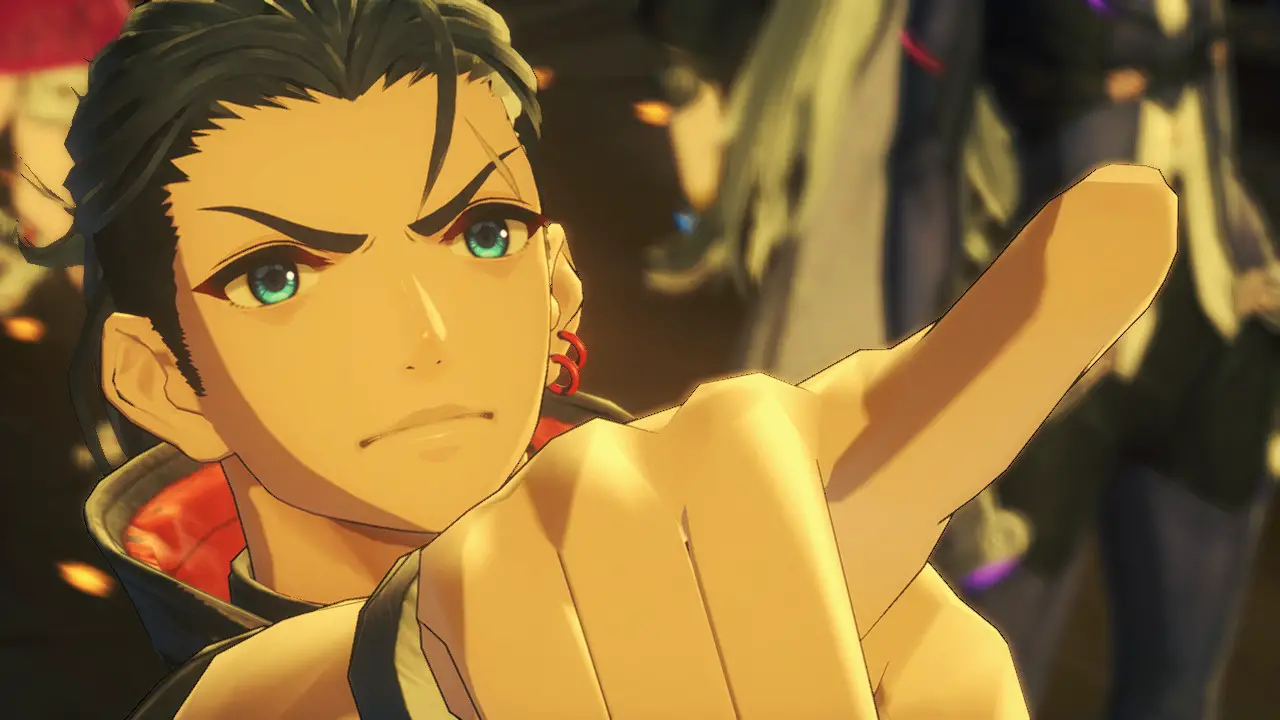
The City is gone. In the wake of Consul N’s attack, even the very ground it stood on has been plunged into the sea. His grandfather dead and sister Na’el missing, Matthew is searching the center of Aionios – the Cent-Omnia Region – when he meets a person known only as A. Alongside two soldiers and the leaders of the Liberators, Shulk and Rex, they resolve to save Na’el and defeat a mysterious enemy who’s misleading her.
Future Redeemed is the final act in the story of Xenoblade Chronicles. That doesn’t mean the series is ending, far from it, but it does mean that you will need to have finished three 100 hour JRPGs plus two shorter side stories to understand everything that’s going on. I’m going to try and keep my critique of the story vague for anyone who hasn’t been on this wild ride since… 2010 (or earlier if you count Xenogears and Xenosaga), but you should really play all of those first before even reading about Future Redeemed. If you’re in need of a recommendation, this is my favorite video game series and Future Redeemed is the crowning achievement on a now six game saga filled with masterful storytelling, inventive gameplay, and heartfelt characters.
We good? OK, so while Future Redeemed is a prequel to 3 in terms of timeline, it really is the thematic conclusion to everything so far. The series has always been about building towards a better future without forgetting the past or thinking only of the present. You can even see this idea in FR’s party: the Keves and Agnus soldiers, Nikol and Glimmer, represent the present; Shulk and Rex obviously represent the past as previous protagonists; and Matthew and A represent the future. (A is confirmed to be non-binary in the game, which certainly gives me great hope for where the future is heading.) These “pairs” all intermingle throughout the story with some great character development for everyone. Shulk and Rex bond over the struggles of being [REDACTED], Nikol and Glimmer discover that there’s more to life than endless war, and Matthew charges relentlessly forward while A gets him to think things through a bit. There’s a ton of fanservice here, but it again is mostly doing its own thing like the base game. Still, it’s incredibly cool to see a lot of what happens later on in the game as a super fan, even if part of me wishes it had more time to really further develop all those themes and now realizes that 3’s ending feels rushed in retrospect as well.
Future Redeemed plays very similarly to the base game, so I’ll skip the basic explanations of battle (which you can read in my review of 3). The main difference here is the lack of class changing and the fact the party hasn’t realized the full potential of the Ouroborus yet. When fusing arts, instead of both effects activating simultaneously, you may get an entirely different art. For example, without fusion Matthew’s Mighty Strike deals more damage when attacking from the front and Energy Boost just grants him the power charge buff. When fused, both of those things still happen, but he also inflicts Knockback and gains Fast Charge. One of my favorite combinations involves Rex’s arts gaining Break and Topple at the same time, letting him perform an entire Driver combo all by himself.
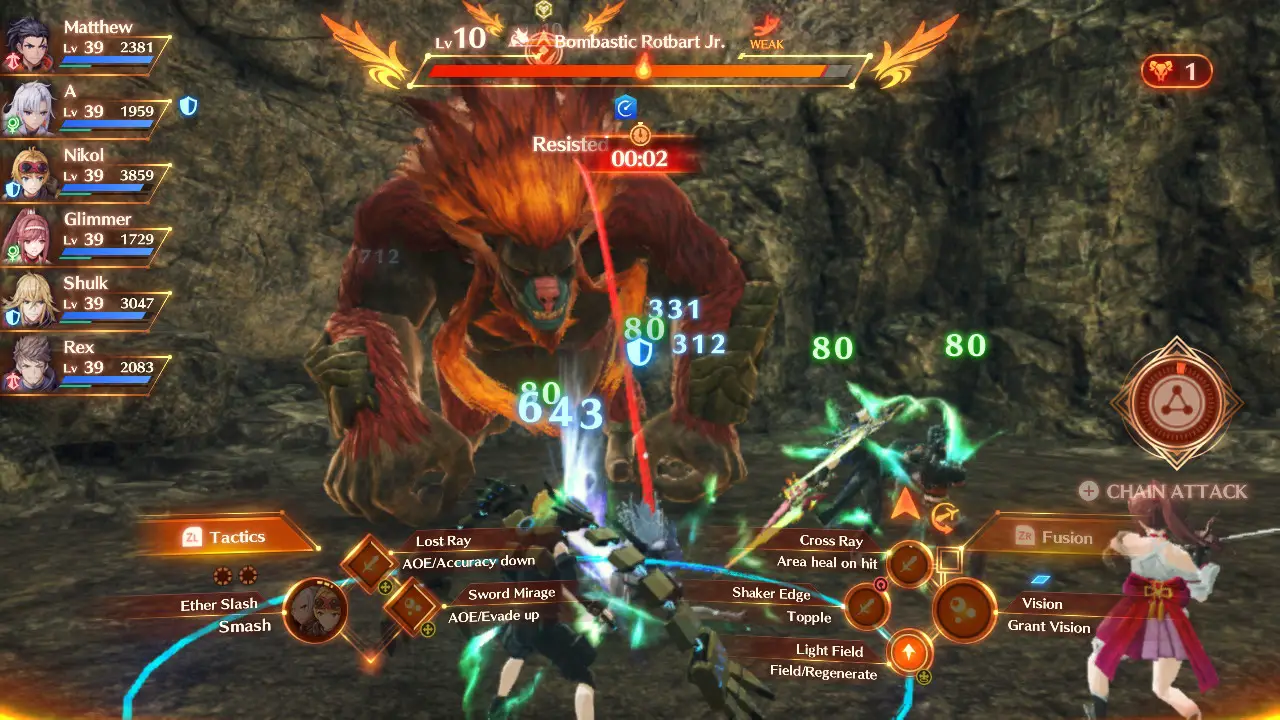
In lieu of interlinking, you can pair characters up for Unity attacks. These serve as the finisher for your Driver Combo after you break, topple, and launch an enemy (Daze has been removed). A Unity attack can have different effects depending on who you pair together, and not just in the final effect of bursting, smashing, or knocking back the enemy. For example, Rex and Glimmer together will give the party a critical hit buff, while Matthew and Shulk’s attack starts with 70% charge instead of having to build from scratch by canceling arts. It’s not quite as interesting as interlinking, but it’s not overpowered either and serves moreso to compliment the rest of the battle system rather than a get out of jail free card.
Your party is much more limited here, each character only has six arts total and you need to unlock all of their accessory, art, and gem slots, but I actually find that makes for much more interesting builds. I love job systems, but sometimes the freedom of being able to do anything does get in the way of fun, and this works great for a shorter experience. Playing to everyone’s strengths is a ton of fun, everyone has their niche, and the only character who’s really broken is Rex. As expected of the Master Driver, he can Dual Spinning Edge with the art recharging with every crit until the cows come home or he takes aggro and dies. My three favorites to play as were Matthew, because he’s constantly canceling between all of his arts, Rex, for Dual Spinning Edge, and A, with their versatile kit of buffs, heals, and debuffs. You do once again have to unlock cancels between all arts before the battle system really gets going, and for each character individually too, but that doesn’t take terribly long.
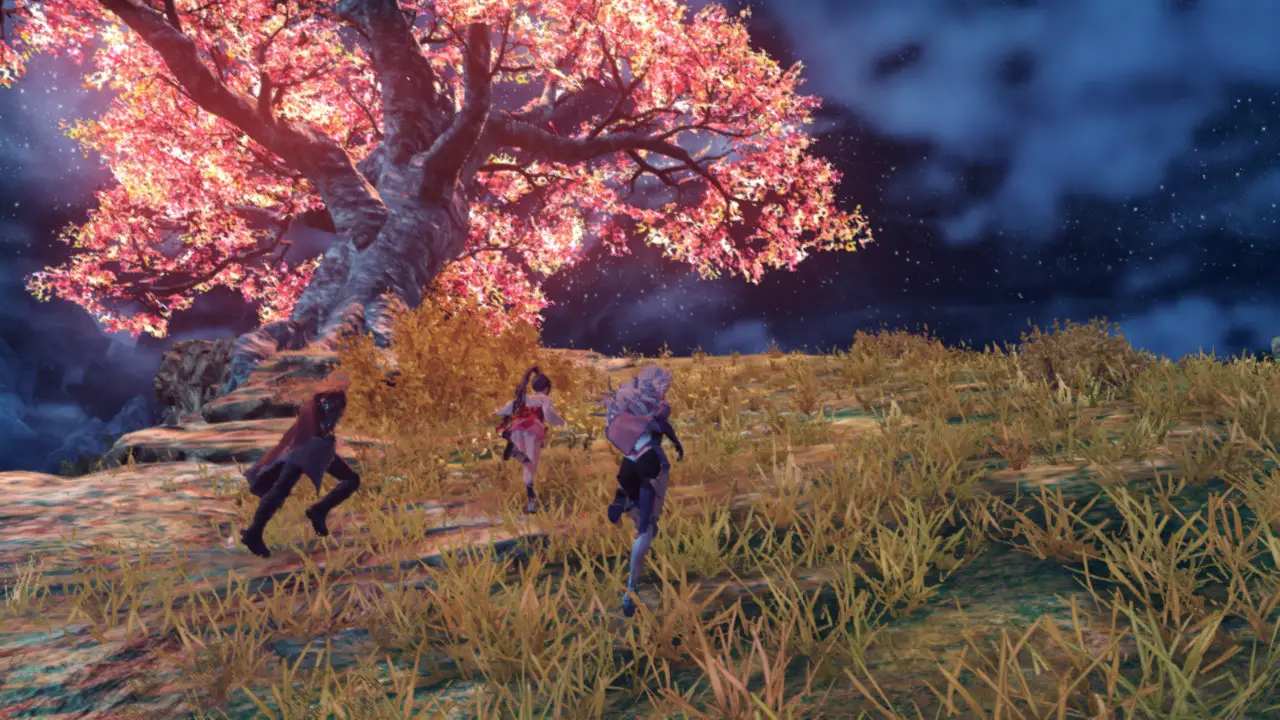
Having to unlock everything is a great way to tie exploration in with building your characters and battles. The party will still gain EXP and levels as you fight, complete quests, and discover landmarks, but your more substantial growth comes from finding unlock kits and spending points in Affinity Growth. Almost everything you can do in the game, from defeating unique monsters to filling out the Collectopaedia, is tracked in Affinity Goals. Doing any of these things on their own will earn you Affinity Points for the party, but fully completing a category in an area will net you a ton more. You then spend AP to unlock new arts and skills, and improve the stats of a character. Only the first tier of growth is available initially, but you can unlock the next two with growth kits as you find them. It feels great to be substantially rewarded for everything you do, and I hope this type of system sticks around for whatever comes next.
Something else I hope the series retains going forward is the quality of life added here. From the map screen you can quickly swap between the Collectopaedia and Enemypaedia, showing you a percentage of completion for every area in that category. On the map itself you can see completion for everything including treasure opened chests, unique monsters defeated, affinity scenes viewed, and much more. It’s incredibly convenient and makes it easier to parse what becomes a very cluttered map screen. When fast traveling you still have the option to change the time of day (with the default option not changing time at all, which is a great touch), but you can also unlock the ability to change the weather; very useful for spawning unique monsters who only appear under certain conditions. While the discussion system of the base game was a cool way to initiate side quests, it made it very difficult to tell if you’ve fully completed an area’s optional content, and I much prefer just being able to see them on the map again. Still, it would be nice to include them in each area’s completion info.
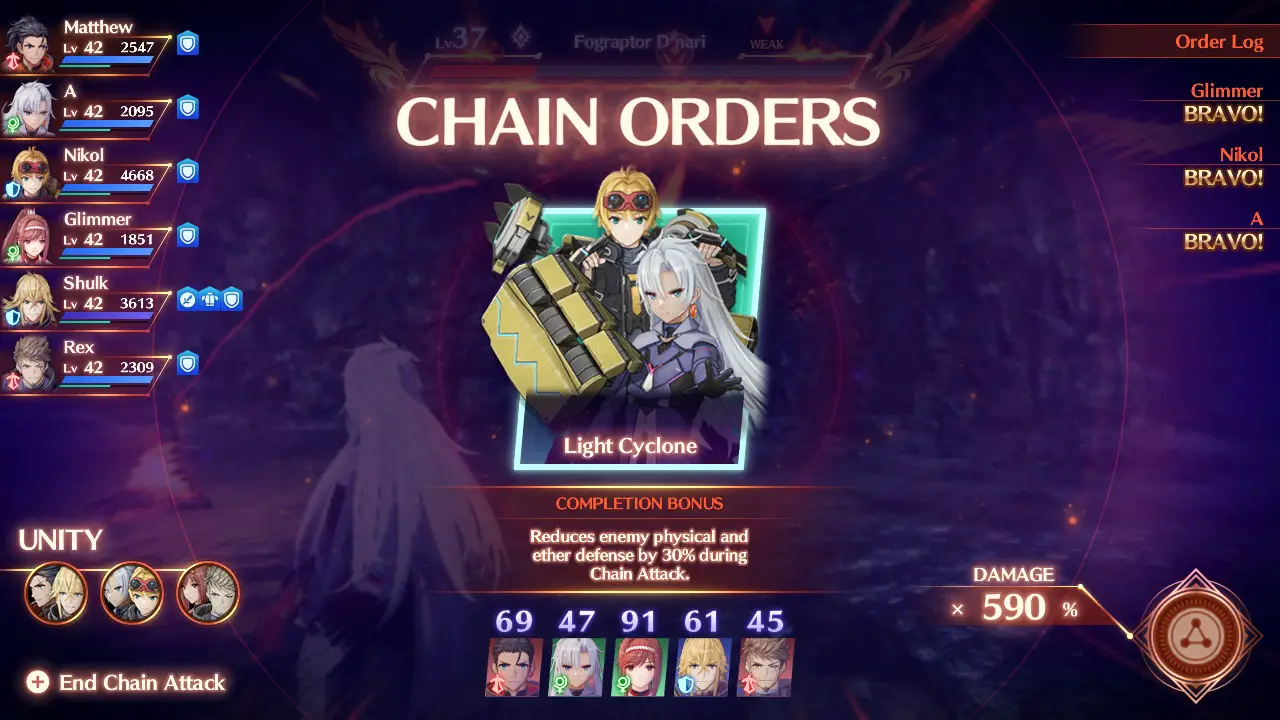
In addition to seeing them on the map, side quest completion is tracked through the Community menu returning from Torna. That may bring back bad memories for some of you, but it’s no longer required to fill out to progress the story. Instead, it simply shows all the people you’ve met, whether you’ve reached max affinity with them, and the requirements for doing so. You can even track an NPC’s location if you need to talk to them, which is super handy. Pretty much everyone resides in the game’s single town, and you’ll find city survivors throughout the map and direct them there. Some citizens you will need to save from monsters or soldiers, however, but they’re all found through the new X-Reader. This handy tool will start to ping and your minimap will start to glow when a collectable is near, the ping becoming louder and the glow getting brighter as you get closer. If that’s not enough to find something, you can also construct a beacon in select locations which will mark everything in range you haven’t discovered with a question mark.
Building is actually a key part of this expansion. Throughout the world you’ll find broken ladders and elevators, gaps you can’t cross, and cliffs you can’t climb. In select locations, you can use materials to repair these objects or build Ether Slides and Lifts to open up shortcuts or access new areas. It’s great having another use for all that junk you collect throughout the game other than side quests, weapon upgrades, and the Collectopaedia, though if this feature returns I would like it to be a bit less restrictive. I enjoy the system as it is now and I don’t want it to become Minecraft or something, but being able to create my own shortcuts at least would be super cool.
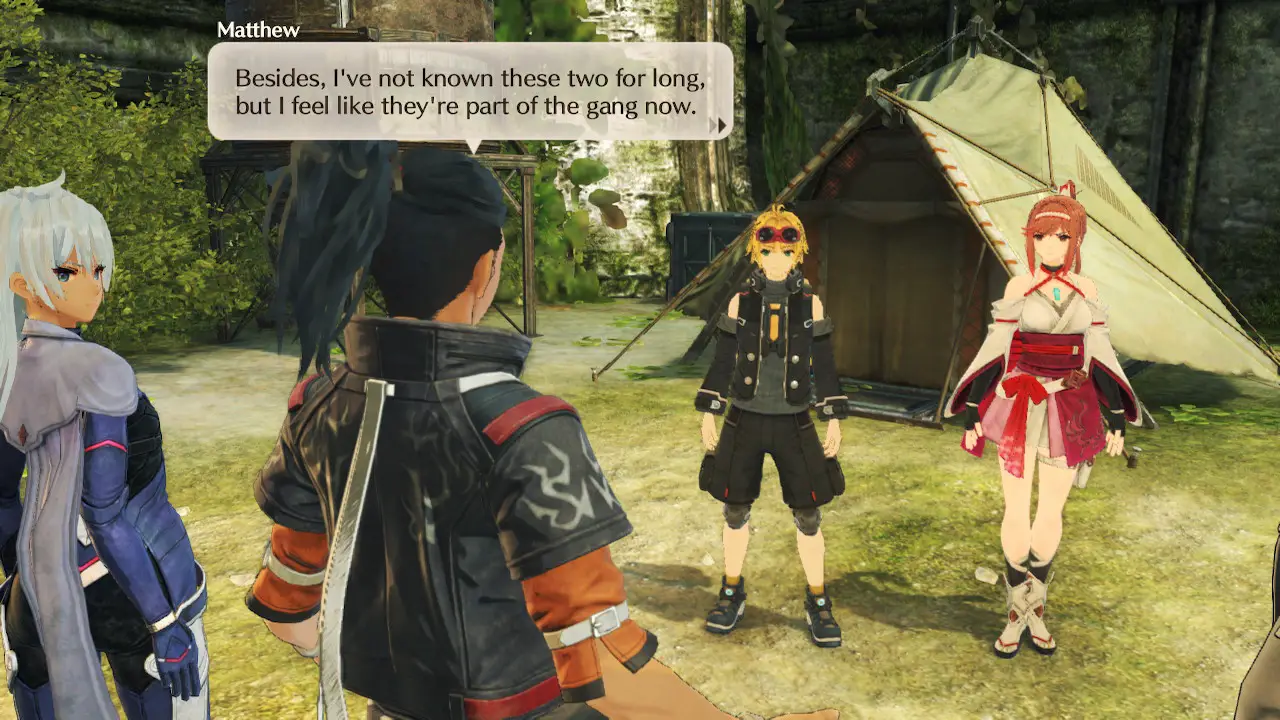
Unlike other games in the main series (this excludes X), Future Redeemed is fully open world with no loading screens between areas. As a result, it makes the world you explore feel more interconnected and alive. While there are still swathes of empty space, individual locations are a bit smaller than normal but more packed with things to do and more interesting level design. It’s a nice change of pace, and with vistas just as gorgeous as every other game in the series. As expected, the music is also amazing – in particular the battle theme and final boss were my favorite tracks.
Overall, I think I actually like Future Redeemed more than the base game. I loved 3 with its heartfelt love story and open ended combat system, but the tighter experience here combined with a marked improvement on most of what the base game did just puts it a step above. On top of that, I adore the new party here despite the shorter runtime and, as a massive fan of the rest of the series, the references, returning characters with new arcs, and revelations tie everything together so well.
Xenoblade Chronicles 3: Future Redeemed
Excellent
Xenoblade Chronicles 3: Future Redeemed is a fantastic addition to the Xenoblade Chronicles saga. It ties up the story so far in a nice thematic bow, with equal amounts of new additions and returning favorites. The combat system is tighter and incredibly satisfying, and is even tied to exploration to make you feel like you’re always growing. Once again, I can’t wait to see what Monolithsoft cooks up next.
Pros
- Amazing characters and story
- A truly open world
- Much tighter battle system
- Tons of convenience features
- Canonically non-binary character
Cons
- Essentially one optimal build for every character
- A bit too short
